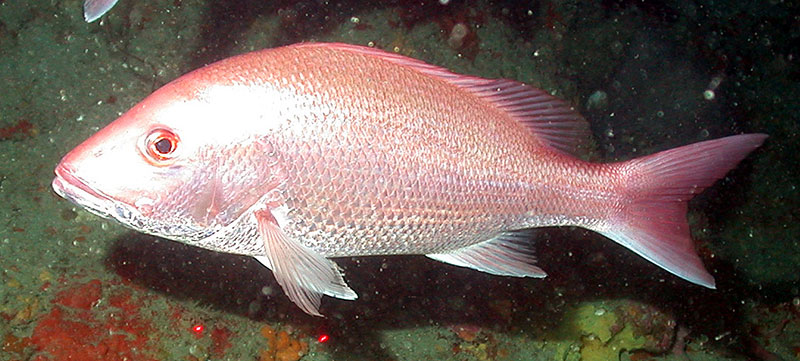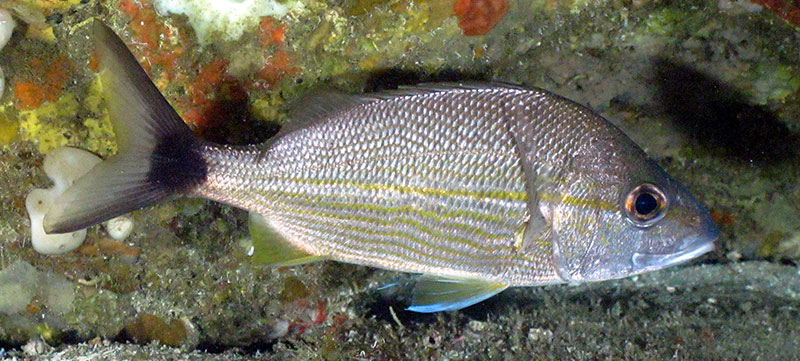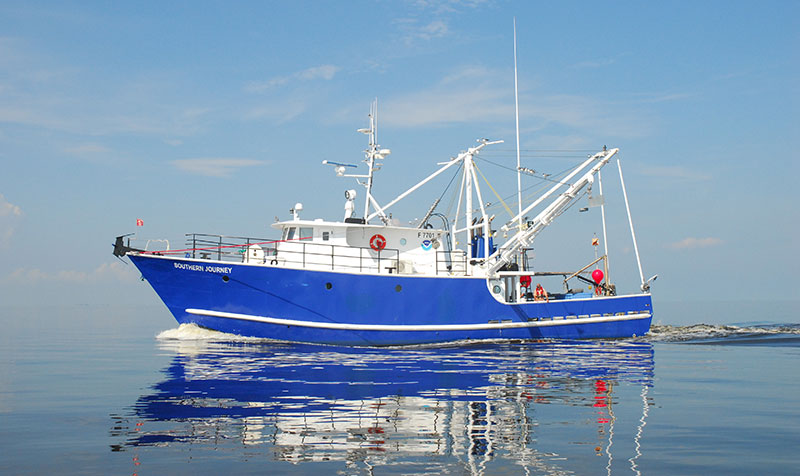
By Andrew David, Fishery Biologist, NOAA's National Marine Fisheries Service
May 11, 2019

Red snapper, Lutjanas campechanus, is one of two focal species for this project. Red snapper is a commercial species that is found throughout the Gulf of Mexico from 15-90 meters (50-300 feet) in depth. Image courtesy of Southeast Fisheries Science Center – Panama City and University of North Carolina Wilmington Undersea Vehicles Program. Download larger version (jpg, 624 KB).

Tomtate, Haemulon aurolineatum, is one of two focal species for this project. The tomtate is a member of the grunt family Haemulidae and is found from 0 to 100 meters (0 to 328 feet) in depth throughout the Gulf of Mexico. Image courtesy of Southeast Fisheries Science Center – Panama City and University of North Carolina Wilmington Undersea Vehicles Program. Download larger version (jpg, 3.4 MB).
From May 17 to 26, if you are looking for me, I’ll be out fishing. The second cruise for this project of this field season will begin on May 17 on the R/V Southern Journey (owned and operated by NOAA’s National Marine Fisheries Service) and will focus on collecting our two target species—red snapper (Lutjanas campechanus) and tomtate (Haemulon aurolineatum). The tomtate is a small fish that is in the middle of the food chain, whereas, the red snapper is a commercially fished species that is near the top of the food chain.
We will be collecting these fish species from 15 reefs and banks in the northwestern Gulf of Mexico to the east of the Flower Garden Banks National Marine Sanctuary. We are studying the relationship of the fishes at the different locations and comparing their genetic relationships, overall health, diet, and age. With this information, we hope to better understand whether the populations of these species at each bank are a single population or several different populations. This type of information is important for resource managers so that they can effectively manage and conserve fish populations.

The R/V Southern Journey, owned and operated by NOAA’s National Marine Fisheries Service, will be used for collecting our target fish species. Image courtesy of Southeast Fisheries Science Center – Pascagoula. Download larger version (jpg, 3.9 MB).
We will be fishing using methods very similar to those used by recreational and commercial anglers—hook and line fishing gear. Our goal is to collect 20–30 fish of each species from the 15 reefs and banks at depths of 100 to 500 feet. After the samples are collected and preserved, the fish will be frozen and stored on board. At the conclusion of our cruise, the fish will be donated to charity to not waste the resource.